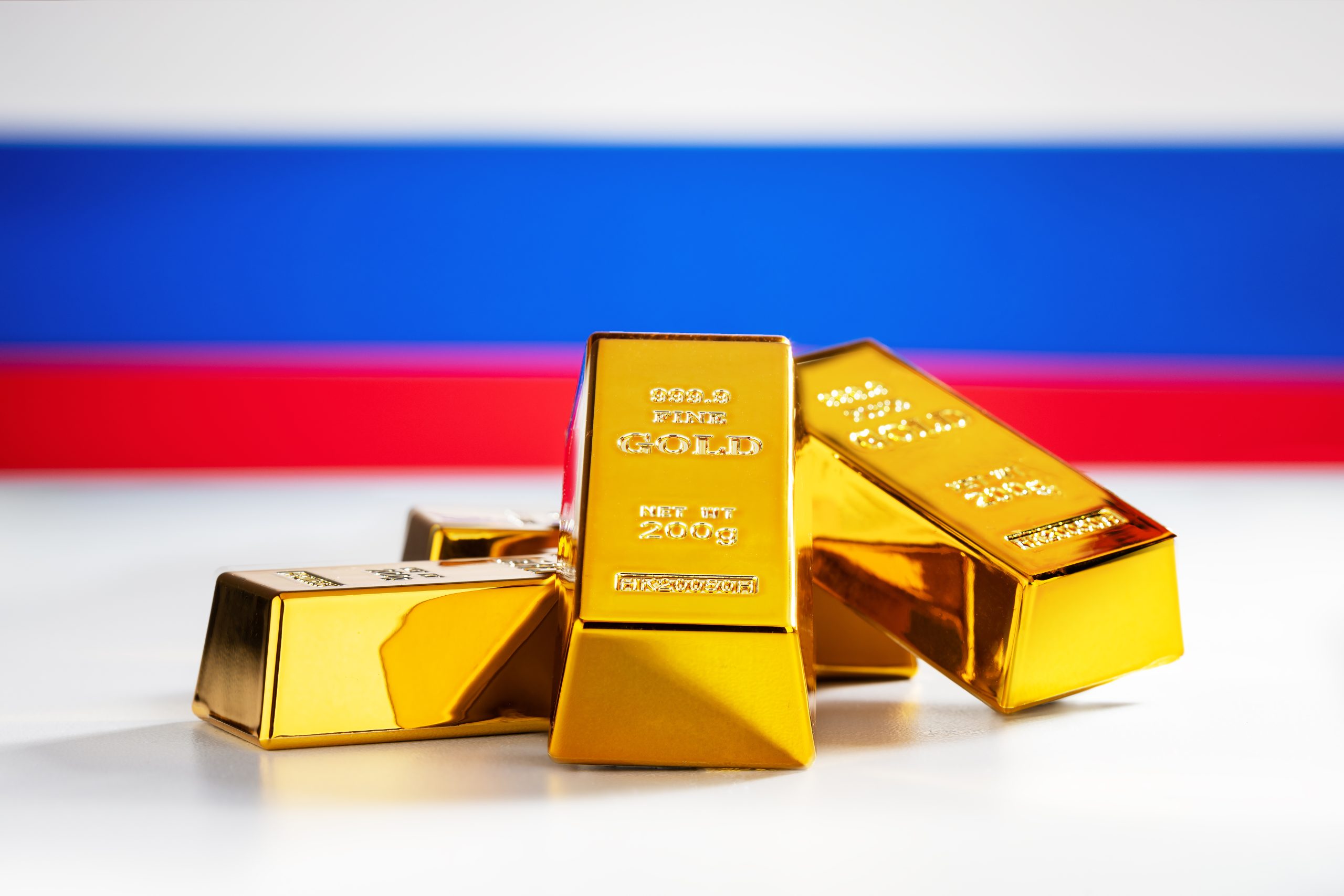Russia’s central bank confirmed in a Reuters report this week what markets have suspected for months: Moscow is accelerating gold accumulation inside the domestic market, dramatically increasing purchases for the National Wealth Fund (NWF). The reason? Enhanced liquidity of gold inside Russia and a forced strategic pivot away from Western currencies that Moscow can no longer access.
For investors tracking global de-dollarization and commodity-backed reserves, this shift marks a significant realignment in how sovereign wealth is stored — and it raises an even more interesting question: Where is all this gold coming from?
Sanctions Push Russia Toward “Two Remaining Liquid Assets”
After Western sanctions froze the Bank of Russia’s holdings in U.S. dollars, euros, and other G7 currencies, Moscow’s reserve strategy changed overnight. The central bank responded in its statement:
“Purchases and sales of gold for the National Wealth Fund have been increasing in recent years as domestic market liquidity improves… yuan and gold are liquid assets of the NWF.”
With the dollar and euro effectively unusable inside Russia’s sovereign accounts, gold has become the reserve of last resort — and in Moscow’s view, its safest asset. The acceleration of accumulation underscores a geopolitical trend unfolding across emerging markets, BRICS nations, and commodity-rich states: gold is returning to the center of international finance.
Domestic Gold Market Liquidity Is Surging
Russian refiners, banks, and mining companies — once reliant on international markets — have redirected nearly all supply toward the domestic financial system. With foreign buyers constrained, the Russian Central Bank has become the only meaningful, price-insensitive buyer inside the country.
This has created a feedback loop:
- More domestic gold stays inside Russia
- Liquidity inside the local market rises
- The NWF aggressively absorbs it
- Foreign sales drop to nearly zero
Russia has now stopped exporting gold abroad, officially citing sanctions — but it also aligns perfectly with its push to build an internal, sanction-resistant reserve system.
But Here’s the Real Story: How Much of Russia’s Gold Is Coming From West Africa?

Russia’s own mining industry is substantial, but production growth has slowed, and much of its mine output is already spoken for by existing domestic buyers. Yet Russia’s gold reserves continue rising, and the NWF’s activity has increased beyond what local mines alone can supply.
This is where geopolitics enters the picture.
Russia’s West African Footprint
Over the last decade — and accelerating since 2021 — Russia has established deep ties with gold-rich nations across West Africa:
- Mali
- Burkina Faso
- Central African Republic
- Sudan
- Niger
- Guinea
Through a combination of security partnerships, political alliances, and commercial agreements with state-owned mining firms, Russia has positioned itself as a shadow buyer and financier of gold operations across the Sahel.
Why West Africa Matters
West Africa is ground zero for some of the highest-grade, lowest-cost gold deposits in the world. Production from these regions is:
- Difficult for Western regulators to track
- Easily routed through local refineries
- Often sold to non-Western buyers via off-market channels
- Increasingly flowing toward BRICS-aligned nations
U.S. and EU intelligence reports have repeatedly implied that Russian-linked entities acquire significant volumes of West African gold, either directly or via intermediaries. This gold can then:
- Enter Russian-controlled trading networks
- Be refined within friendly jurisdictions
- Be settled in yuan or local currencies
- Ultimately bolster Russia’s sovereign reserves
The timing is no coincidence: as Russia halted gold exports, inflows from Africa appear to have strengthened.
Is This How Russia Is Rebuilding Its Frozen Reserves?
It’s not unreasonable to conclude that Russia is offsetting the loss of its frozen Western assets by securing physical gold from West Africa.
Physical gold:
- Cannot be frozen
- Is outside the dollar-based financial system
- Can be transported discreetly
- Is perfectly suited for sanction-resistant reserves
With Russia’s NWF expanding its gold activity “in recent years,” the geopolitical supply chain is becoming increasingly visible — even if unspoken.
Why This Matters for Offshore Investors
For international investors, wealth managers, and institutional allocators, the lesson is clear:
1. Gold is becoming the new global neutral asset.
When superpowers shift from treasuries to bullion, global capital is entering a new era.
2. Commodity-backed reserves are strengthening in BRICS-aligned economies.
Russia, China, and much of the Global South are building systems outside Western control.
3. West African gold will play an outsized role in global reserve restructuring.
Investors with exposure to West African production, refinery partnerships, and logistics networks sit on the frontier of a geopolitical transformation.
4. De-dollarization is accelerating faster than markets acknowledge.
Russia’s pivot is not symbolic — it is structural.
Conclusion: The Gold Axis Is Shifting
Russia’s message is unmistakable: the era of holding Western financial assets is over, and the future of sovereign wealth lies in gold and yuan — both of which sit outside U.S. and EU jurisdiction.
But beneath the official statements, a deeper truth is emerging.
Russia’s rising gold reserves may not be solely a product of domestic mining — but of expanding influence across West Africa’s gold fields. And that makes the region one of the most strategically important sources of bullion in the world today.
As always, Invest Offshore is actively involved in West African infrastructure, energy, and commodity financing, with projects aligned to the Central African Copperbelt and gold-producing regions — opportunities now sought by global buyers and sovereign wealth funds alike.
If you’re an investor looking to understand or access strategic gold flows in West Africa, this is where next decade of opportunity lies.

Leave a Reply